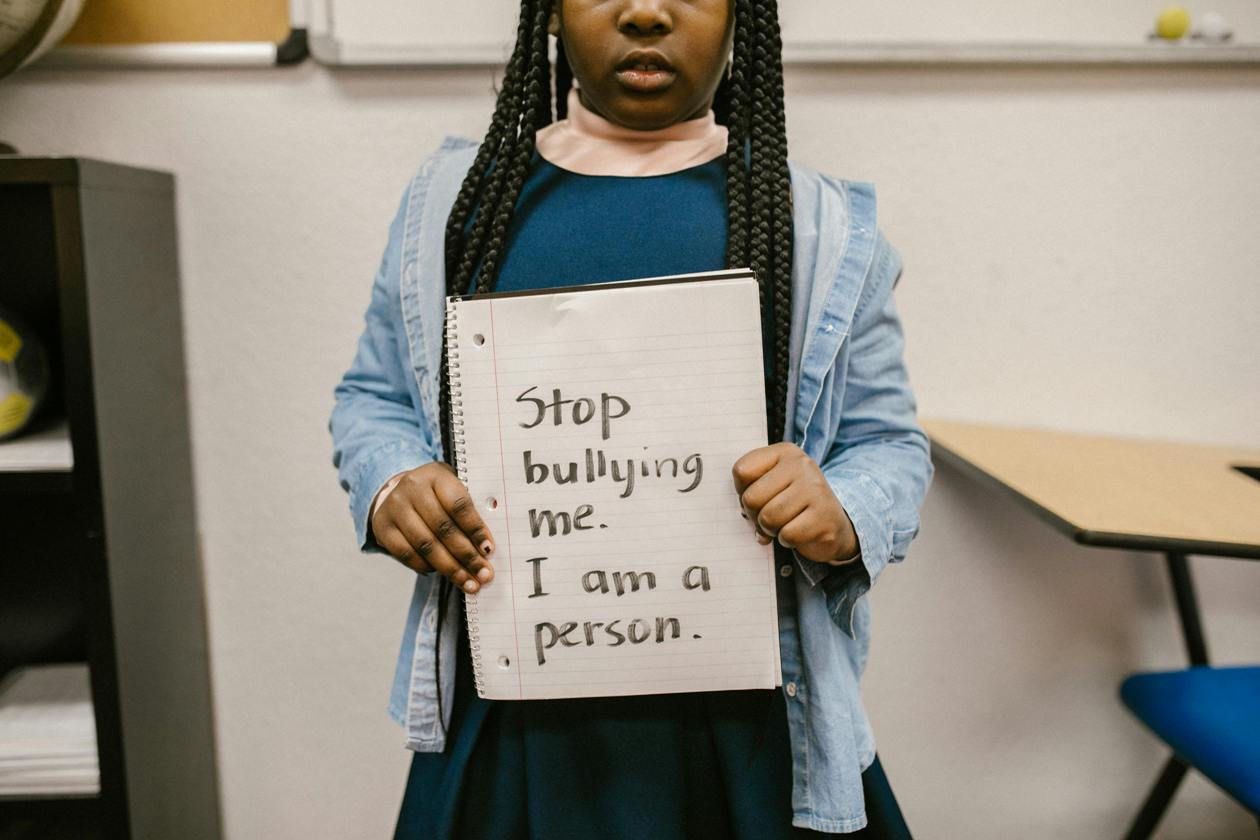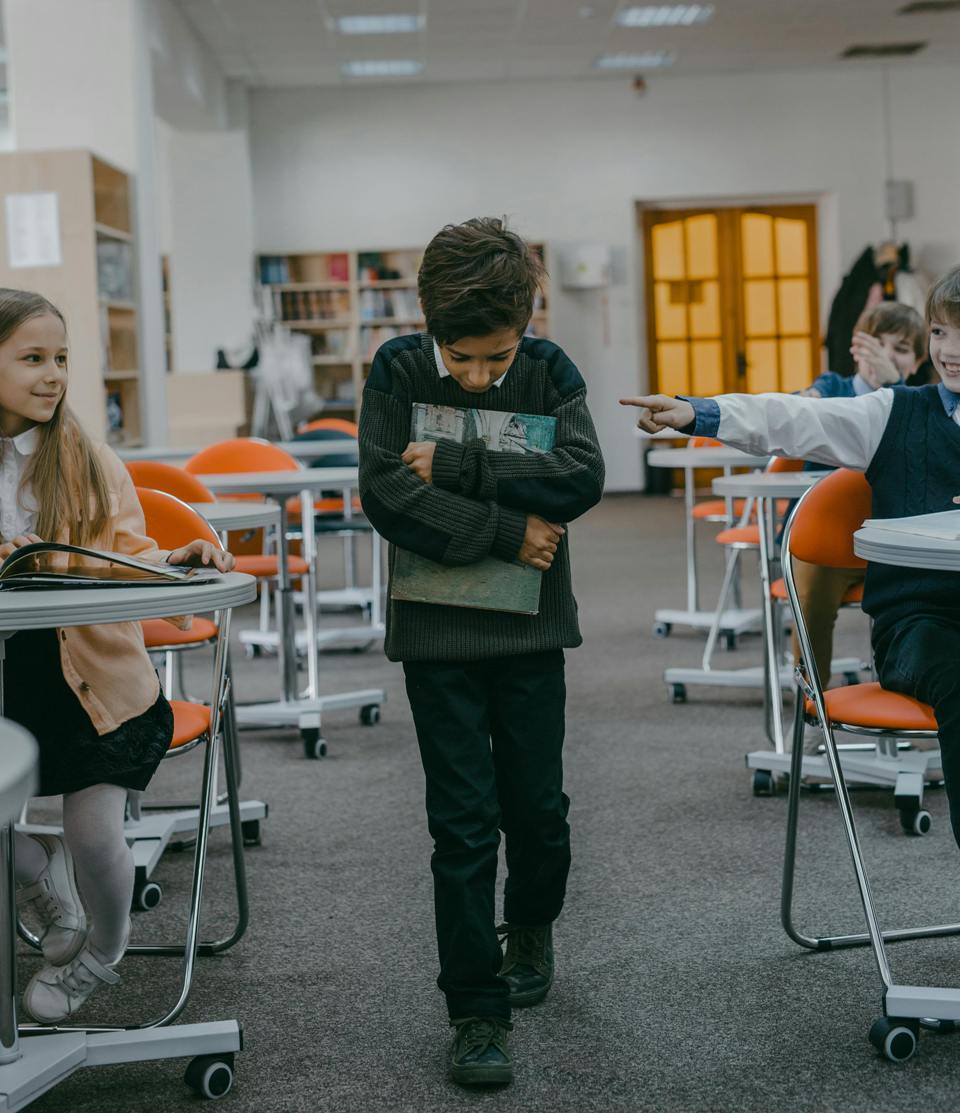Bullying Prevention for Kids: A Marriage and Family Therapist’s Perspective
Therapy2Thrive® Pleasanton
925-998-3392
Bullying Prevention for Kids: A Marriage and Family Therapist’s Perspective
1. Understanding Bullying as a Relational Issue
Bullying is more than just an individual problem; it occurs in the context of relationships. Whether verbal, physical, or cyber, bullying stems from power imbalances in social interactions. Children who bully often seek control or dominance, while those who are bullied feel powerless and isolated.
We view these dynamics through the lens of attachment, family communication patterns, and social learning. Children model their behavior on what they observe at home, in the media, and among peers. They may bully because they’ve experienced aggression or insecurity in their environment, or they may be mimicking unresolved conflicts they see in relationships around them.

2. Building a Safe and Supportive Home Environment
One of the most effective ways to prevent bullying is by fostering a safe, secure home environment. Family systems that emphasize healthy communication, mutual respect, and emotional support provide children with the tools they need to manage their emotions and interactions with others.
Here are some strategies to create a supportive home environment:
- Promote Open Communication: Encourage your child to talk openly about their experiences at school and with friends. Be curious and ask non-judgmental questions about their social interactions. Let your child know that it’s safe to share their concerns without fear of punishment or shame.
- Demonstrate Empathy and foster Emotional Intelligence: Show your child your understanding of their feelings and others’, help them recognize the impact of their and others’ actions. Use everyday situations to demonstrate and teach empathy, such as discussing how a sibling or peer might feel in the same situations.
- Teach and model Healthy Conflict Resolution: Children learn by observing how parents and caregivers handle disagreements. Show your child that conflicts can be resolved without aggression or hurtful behavior. Practice active listening and provide problem-solving strategies when disagreements arise in the family.
- Strengthen Your Child’s Self-Esteem: Children with a strong sense of self-worth are less likely to bully or be bullied. Celebrate your child’s strengths and help them develop a positive identity that isn’t tied to dominating or demeaning others. Encourage activities where they can build confidence and resilience, such as sports, arts, or hobbies.
3. Collaborating with Schools, Sports, and Communities
We believe in the power of collaboration between families, schools, sports teams, and communities in addressing bullying. Parents can’t prevent bullying alone—children spend a significant amount of time in school and in extracurricular activities like sports, where bullying often takes place. It’s crucial to work with educators, coaches, and administrators to create a supportive environment both at home and in the classroom.
- Advocate for Anti-Bullying Programs: Schools that implement comprehensive anti-bullying programs see reductions in bullying incidents. These programs often include teaching children about respect, diversity, and emotional regulation. Speak with your child’s school or sports league about their anti-bullying policies and how they handle incidents of bullying.
- Mandatory Anti-Bullying Training: In some sports organizations, there is now a requirement that both athletes and their families complete mandatory anti-bullying training before enrollment. This training helps ensure that all members understand what constitutes bullying, how to prevent it, and what actions to take if bullying occurs. By making this training a prerequisite for participation, sports teams foster a culture of respect and accountability both on and off the field.
- Encourage Peer Support Systems: Kids are more likely to intervene in bullying situations if they know they have support. Encourage your child to be an ally and stand up for classmates or teammates who may be bullied. Schools and sports teams can foster peer support through buddy systems, group activities, and student-led initiatives to create a culture of kindness.

4. Empowering Children to Respond to Bullying
Children need to know how to respond if they encounter bullying, whether they are victims or witnesses. We often work with families to empower children with practical skills to navigate these situations:
- Teach Assertiveness, Not Aggression: If your child is being bullied, it’s important they know how to assertively stand up for themselves without escalating the conflict. Role-play scenarios where they calmly but firmly state that they won’t tolerate hurtful behavior. Help them practice using “I” statements, such as “I don’t like it when you say that to me.”
- Encourage Seeking Help from Trusted Adults: It’s vital that children feel comfortable seeking help from teachers, counselors, coaches, or other trusted adults when bullying occurs. Reassure them that asking for help isn’t a sign of weakness and that they don’t have to face bullying alone.
- Discuss Safe Bystander Intervention: If your child witnesses bullying, encourage them to help in safe ways. This might include getting help from a teacher, offering comfort to the victim, or reporting the incident anonymously if they fear retaliation.
5. Using Play Therapy to Address Bullying
For younger children or those who may struggle to express themselves verbally, Play Therapy can be an incredibly effective tool. Play Therapy allows children to communicate their feelings, experiences, and fears through play, a medium they are naturally comfortable with.
When dealing with the emotional effects of bullying, Play Therapy can help children:
- Process Trauma and Fear: Through play, children can act out bullying scenarios and express their emotions in a safe and non-threatening way. This helps therapists understand their internal world and guide them in processing their experiences.
- Build Coping Skills: Therapists can introduce scenarios and games that teach children how to manage their emotions, assert themselves, and develop social skills to navigate complex peer interactions.
- Enhance Self-Esteem: Play Therapy can reinforce a child’s self-worth by giving them a sense of mastery and control in therapeutic play settings. Positive reinforcement during these sessions helps them internalize self-confidence, making them less vulnerable to bullying or, conversely, less likely to bully others.
6. Dyadic Developmental Psychotherapy (DDP) for Family Healing
Bullying often stems from attachment and relational issues, which can manifest as behavioral problems both at home and school. Dyadic Developmental Psychotherapy (DDP), rooted in attachment theory, focuses on helping children develop secure relationships and heal from trauma by working with them and their caregivers.
For families affected by bullying, DDP can help by:
- Strengthening Parent-Child Connections: DDP encourages open, empathetic communication between children and their caregivers. By addressing attachment-related issues, DDP can help children feel more secure and valued within their family, reducing the likelihood of acting out or bullying behaviors.
- Repairing Emotional Wounds: For children who have been bullied, DDP creates a safe space to explore their feelings of hurt, fear, or anger. Caregivers are actively involved in the therapy process, which fosters a healing relationship and helps the child recover from the emotional damage caused by bullying.
- Addressing Aggressive Behavior: For children who engage in bullying, DDP helps explore the underlying emotions driving this behavior, such as insecurity or attachment disruptions. By creating a nurturing and responsive environment, DDP can reduce aggressive tendencies and promote healthier ways of relating to peers.

7. Supporting the Mental Health of All Children Involved
Both children who bully and those who are bullied may need support to manage the emotional toll of these experiences. We see both as needing compassion and help, whether that’s through therapy, counseling, or family support systems. Addressing underlying issues, such as anxiety, depression, or trauma, can be key in reducing bullying behaviors and healing from its effects.
- For the Child Who Bullies: Children who engage in bullying may be struggling with their own insecurities or issues at home. Therapy can help them develop healthier ways to express themselves and relate to others, as well as uncover any underlying emotional needs.
- For the Child Who Is Bullied: Being bullied can lead to anxiety, depression, and low self-esteem. Therapy, including Play Therapy or DDP, can provide a safe space for these children to process their emotions and build resilience, helping them regain a sense of control over their lives.
Conclusion
Preventing bullying requires a holistic approach that involves families, schools, sports organizations, and communities working together. From a MFT’s perspective, understanding the relational and systemic dynamics behind bullying is essential in addressing its root causes. By fostering empathy, communication, and resilience in children, and utilizing therapeutic interventions like Play Therapy and DDP, we can create environments where bullying is less likely to occur and where all children feel safe, supported, and valued.
Therapy2Thrive™ brings Hope for Healing
Our counselors at Therapy2Thrive™ provide compassionate, practical, and evidenced based practices to assist you in the therapeutic process to meet your goals and find hope to heal the challenges you are facing.
Contact our family counselor in Pleasanton for private consultation.
